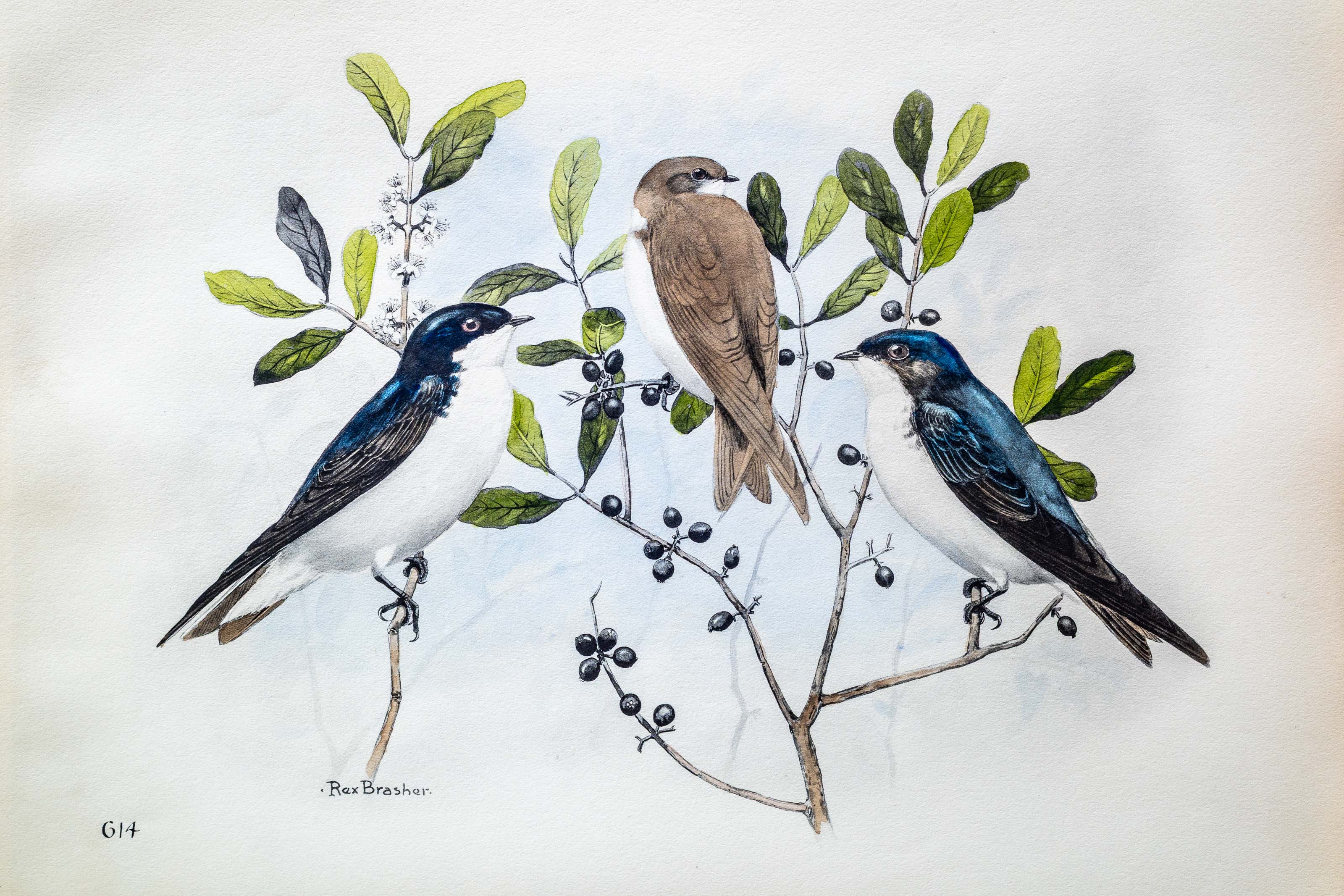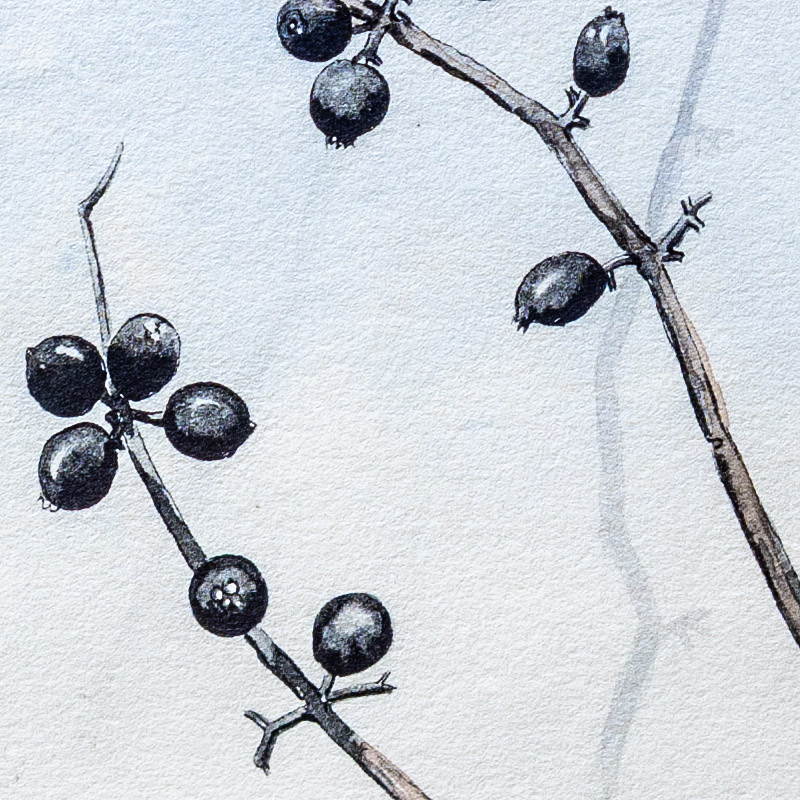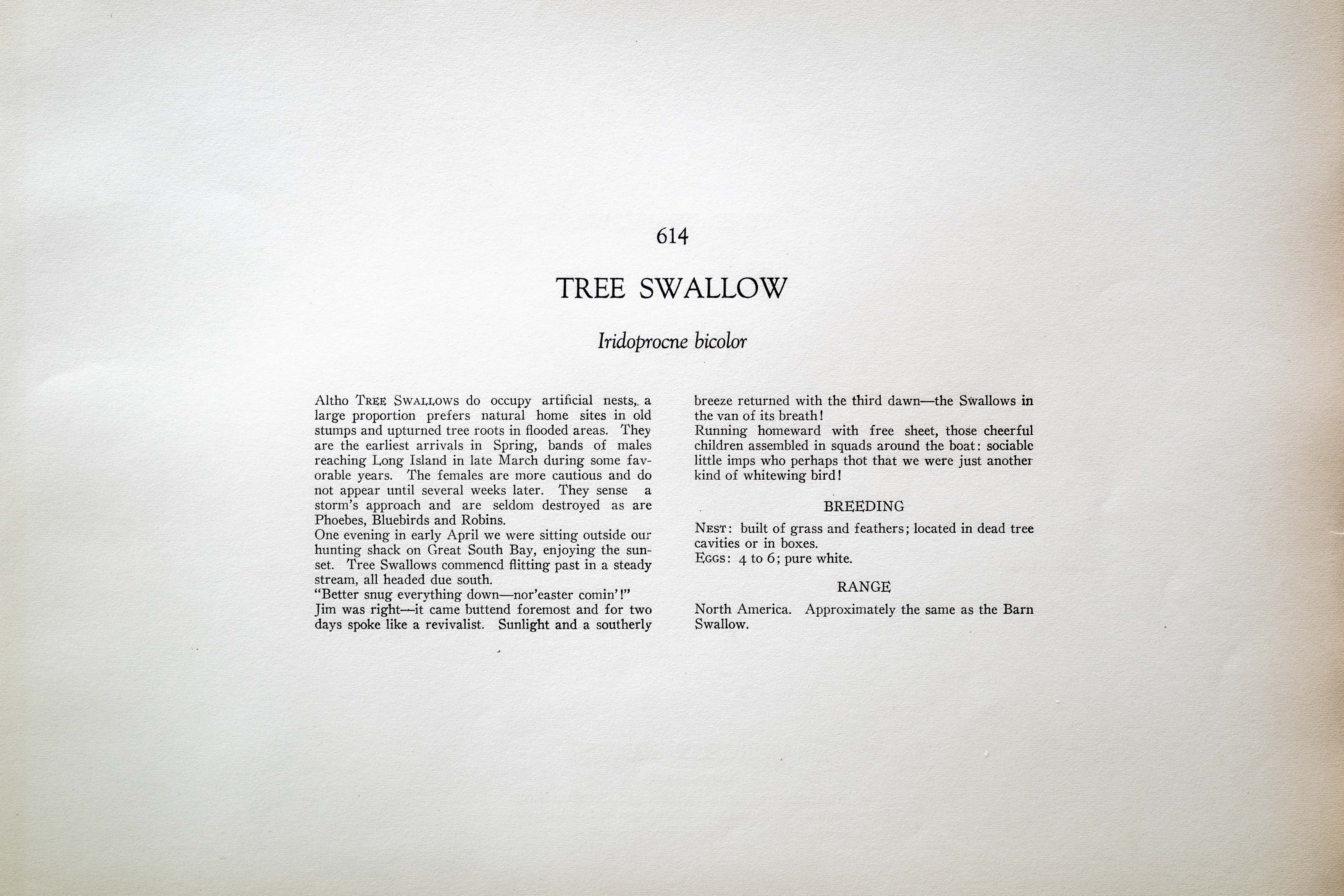






Unknown
1930
10
614
A team of dedicated board members, volunteers, and student interns has published every page in Volume 9. This volume includes 360 images of paintings and lyrical descriptions of birds, now available online for everyone to enjoy anywhere in the world. This is a monumental task. Each volume requires approximately 400 hours to photograph, edit, transcribe, catalog, and publish online. We need your support to complete this work.
If you're tech-savvy, have a good eye, are meticulous with details, and love structured data, please consider volunteering by emailing us at hello@rexbrasher.org.
We encourage all bird lovers and supporters to consider a monetary donation to support our mission to make Rex's work available for everyone. You can provide a one-time or recurring donation online.
Altho TREE SWALLOWS do occupy artificial nests, a large proportion prefers natural home sites in old stumps and upturned tree roots in flooded areas. They are the earliest arrivals in Spring, bands of males reaching Long Island in late March during some favorable years. The females are more cautious and do not appear until several weeks later. They sense a storm's approach and are seldom destroyed as are Phoebes. Bluebirds and Robins.
One evening in early April we were sitting outside our hunting shack on Great South Bay, enjoying the sunset. Tree Swallows commencd flitting past in a steady stream, all headed due south.
"Better snug everything down — nor'easter comin'!"
Jim was right — it came buttend foremost and for two days spoke like a revivalist. Sunlight and a southerly breeze returned with the third dawn — the Swallows in the van of its breath!
Running homeward with free sheet, those cheerful children assembled in squads around the boat: sociable little imps who perhaps thot that we were just another kind of whitewing bird!
NEST: built of grass and feathers: located in dead tree cavities or in boxes.
EGGS: 4 to 6; pure white.
North America. Approximately the same as the Barn Swallow.
A shrubby tree, up to 20 feet high; distributed from central Florida to the southern keys: and on the West Coast, from Caloosa River to Cape Sable.